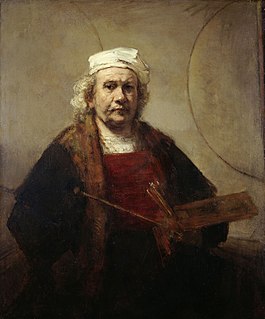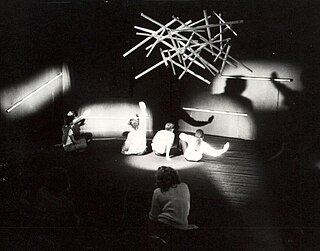 W
WThe arts are a very wide range of human practices of creative expression, storytelling and cultural participation. They encompass multiple diverse and plural modes of thinking, doing and being, in an extremely broad range of media. Both highly dynamic and a characteristically constant feature of human life, they have developed into innovative, stylized and sometimes intricate forms. This is often achieved through sustained and deliberate study, training and/or theorizing within a particular tradition, across generations and even between civilizations. The arts are a vehicle through which human beings cultivate distinct social, cultural and individual identities, while transmitting values, impressions, judgments, ideas, visions, spiritual meanings, patterns of life and experiences across time and space.
 W
WThe art world comprises everyone involved in producing, commissioning, presenting, preserving, promoting, chronicling, criticizing, buying and selling fine art. It is recognized that there are many art worlds, defined either by location or alternative definitions of fine art. Some may use the singular art world to refer only to the elite level of globalized fine art. The art world(s) are continually changing in response both to the creativity of those that create art and in response to social change.
 W
WArtes mechanicae are a medieval concept of ordered practices or skills, often juxtaposed to the traditional seven liberal arts. Also called "servile" and "vulgar", from antiquity they had been deemed unbecoming for a free man, as ministering to baser needs.
 W
WCarving is the act of using tools to shape something from a material by scraping away portions of that material. The technique can be applied to any material that is solid enough to hold a form even when pieces have been removed from it, and yet soft enough for portions to be scraped away with available tools. Carving, as a means for making stone or wooden sculpture, is distinct from methods using soft and malleable materials like clay, fruit, and melted glass, which may be shaped into the desired forms while soft and then harden into that form. Carving tends to require much more work than methods using malleable materials.
 W
WA composer is a person who writes music, especially classical music in any form, including vocal music, instrumental music, electronic music, and music which combines multiple forms. A composer may create music in any music genre, including, for example, classical music, musical theatre, blues, folk music, jazz, and popular music. Composers often express their works in a written musical score using musical notation.
 W
WComputational creativity is a multidisciplinary endeavour that is located at the intersection of the fields of artificial intelligence, cognitive psychology, philosophy, and the arts.
 W
WThe "culture of popular laughter" is a cultural-historical term coined by the literary critic Mikhail Bakhtin in his book Rabelais and His World (1965). This studied popular culture in Renaissance Europe through the themes of François Rabelais' book Gargantua and Pantagruel (1532–64). The idea of the culture of popular laughter combines two literary ideas developed by Bakhtin in the same work: "grotesque realism" and "carnivalesque" which examined, respectively, the celebration of primary needs and the idea of carnival in which social norms were subverted.
 W
WEconomics of the arts and literature or cultural economics is a branch of economics that studies the economics of creation, distribution, and the consumption of works of art, literature and similar creative and/or cultural products. For a long time, the concept of the "arts" were confined to visual arts and performing arts in the Anglo-Saxon tradition. Usage has widened since the beginning of the 1980s with the study of cultural industry and the economy of cultural institutions. The field is coded as JEL: Z11 in the Journal of Economic Literature classification system used for article searches.
 W
WIn European academic traditions, fine art is developed primarily for aesthetics or beauty, distinguishing it from decorative art or applied art, which also has to serve some practical function, such as pottery or most metalwork. In the aesthetic theories developed in the Italian Renaissance, the highest art was that which allowed the full expression and display of the artist's imagination, unrestricted by any of the practical considerations involved in, say, making and decorating a teapot. It was also considered important that making the artwork did not involve dividing the work between different individuals with specialized skills, as might be necessary with a piece of furniture, for example. Even within the fine arts, there was a hierarchy of genres based on the amount of creative imagination required, with history painting placed higher than still life.
 W
WGifted art is any form or piece of art that is given freely, whether to a city, a group of people, a community or an individual. It refers to any art that is distributed at no direct cost. It is a form of conceptual art. It comes from a belief that art should be available for all people to enjoy, whether rich or poor, university graduate or junior high dropout. Since Gifted Art is an expressive form of art - an idea, it encompasses virtually all forms of art: movies, literature, music recordings, sculpture, painting, graffiti, digital art, street performances, performance art, sticker art, comics, coffeehouse poetry and Internet-distributed art etc.
 W
WHigh culture encompasses the cultural objects of aesthetic value, which a society collectively esteem as exemplary art, and the intellectual works of philosophy, history, art and literature that a society consider representative of their culture.
 W
WInteractive art is a form of art that involves the spectator in a way that allows the art to achieve its purpose. Some interactive art installations achieve this by letting the observer or visitor "walk" in, on, and around them; some others ask the artist or the spectators to become part of the artwork.
 W
WA pastiche is a work of visual art, literature, theatre, music, or architecture that imitates the style or character of the work of one or more other artists. Unlike parody, pastiche celebrates, rather than mocks, the work it imitates.
 W
WRepurposing is the process by which an object with one use value is transformed or redeployed as an object with an alternative use value.
 W
WSocial Sciences, Humanities and the Arts for People and the Economy (SHAPE,) is a joint initiative, developed in 2020, by LSE, the British Academy, the Academy of Social Sciences and Arts Council England, to provide a new collective name for the academic disciplines of social science, humanities and the Arts. SHAPE describes these academic disciplines, which focus on human behaviour, as those which ‘help us understand ourselves, others and the human world around us’.
 W
WStendhal syndrome, Stendhal's syndrome or Florence syndrome is a psychosomatic condition involving rapid heartbeat, fainting, confusion and even hallucinations, allegedly occurring when individuals become exposed to objects, artworks, or phenomena of great beauty and antiquity.
 W
WA studio is an artist or worker's workroom. This can be for the purpose of acting, architecture, painting, pottery (ceramics), sculpture, origami, woodworking, scrapbooking, photography, graphic design, filmmaking, animation, industrial design, radio or television production broadcasting or the making of music. The term is also used for the workroom of dancers, often specified to dance studio.
 W
WUnited Art Rating is a reference book published since 1999 by Artists Trade Union of Russia as one of the instruments of art market regulations.